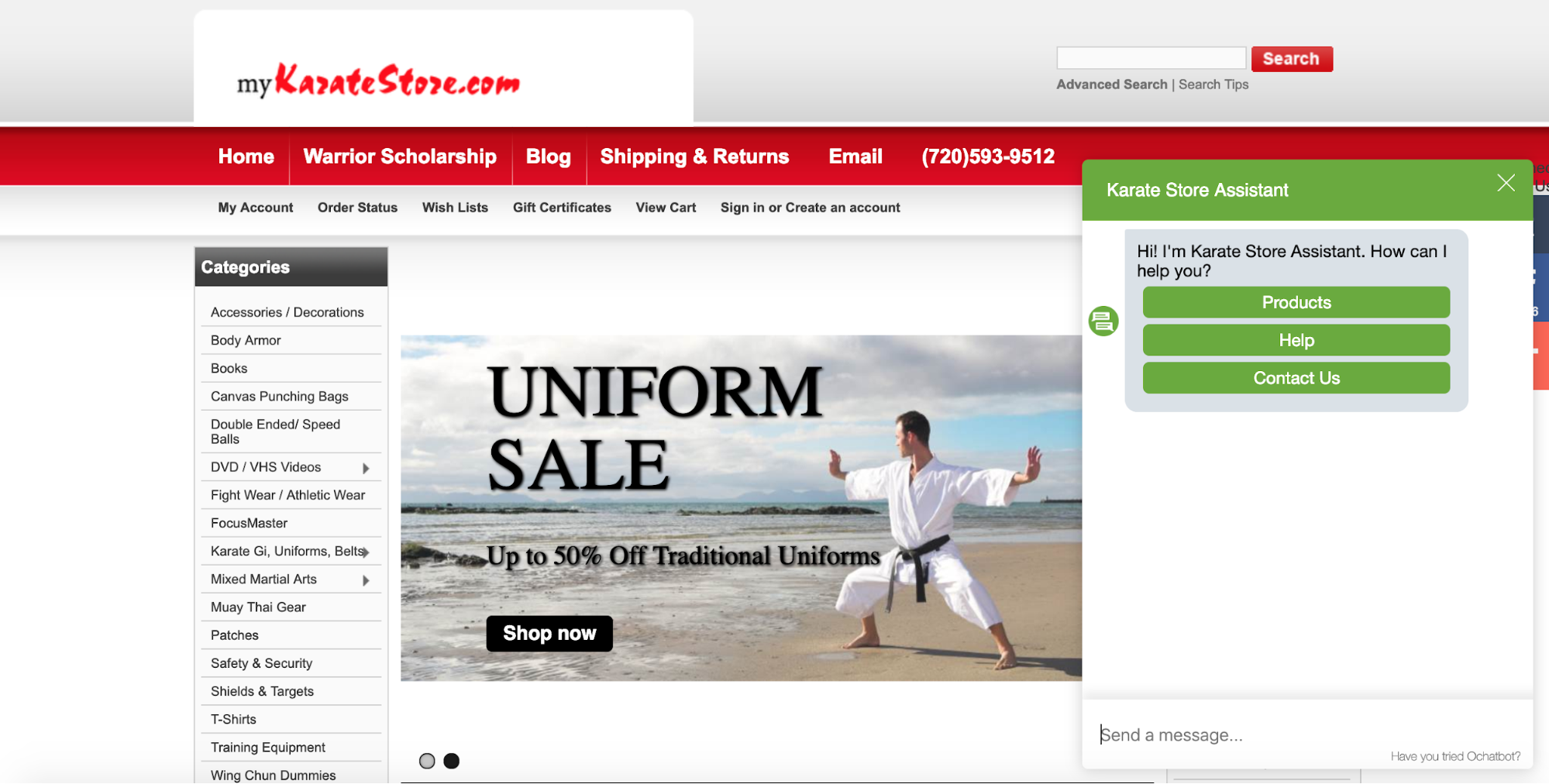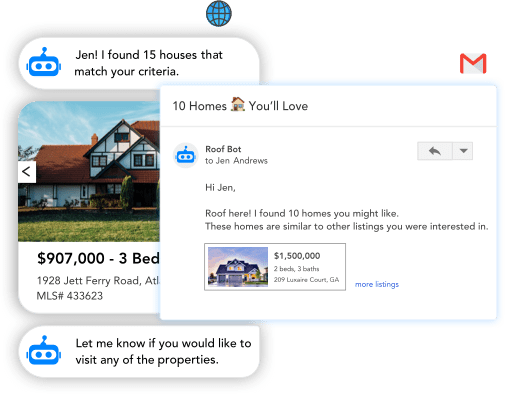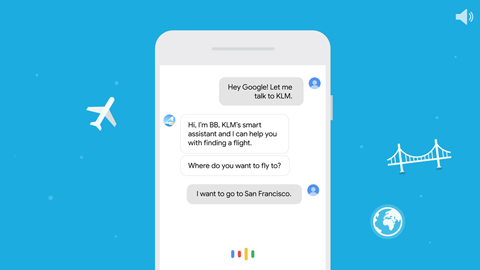Chatbots. If you’ve read any sort of marketing piece of content over the course of the past couple years, you’ve probably seen that word pop up.
It’s for good reason; chatbots are becoming prominent across the internet and are becoming a helpful tool for marketing professionals in a number of industries.
According to research from Oracle, who recently announced the integration of chatbots in their own Oracle applications for sales teams, 80 percent of businesses expect to be using chatbots by 2020.
Need more help with marketing?
Book your FREE 1-on-1 personalized webinar to see the best social media marketing ideas for your business.
Chatbots provide opportunities to drive business value like:
- Providing better customer insights
- Streamlining the consumer experience
- Expediting daily and mundane tasks
As Christie Pitts from Verizon Ventures tells Forbes, “Chatbots represent a new trend in how people access information, make decisions, and communicate. We think that chatbots are the beginning of a new form of digital access, which centers on messaging… Chatbots bring commerce into this part of our lives, and will open up new opportunities.”
What are chatbots?
Chatbots are artificial intelligence (AI)-driven software applications that mimic written or spoken human speech for the purpose of simulating a conversation or interaction with a real person.
At the heart of chatbot technology lies natural language processing (NLP), which is the same technology used by voice recognition systems like Apple’s Siri, Google Now, and Microsoft’s Cortana.
Chatbots are able to process the text sent to them by the user, and form their response according to a series of algorithms that:
- Identifies what the user said
- Understands what they mean and
- Determines what is an appropriate response
Today, chatbots are most widely recognized for their use in customer-service based scenarios, where they often replace a human representative. They can answer queries on e-commerce sites, ranging anywhere from product details to the shipping information.
However, chatbots are also used across many different sectors and industries— from travel to healthcare, and even on dating apps. Because of its many uses and varying applications, the chatbot industry is booming.

According to research the chatbot market, valued at $190.8 million in 2016, is estimated to reach $1.25 billion by 2025 (a compound annual growth rate of 24.3 percent).

Top Three benefits of Chatbots in Marketing
Although consumer preferences continue to change and evolve, consumers still expect a positive customer service experience wherever they choose to do business. The rise of the internet introduced a multitude of new touchpoints, including email, social media, and mobile apps.
Fifteen years ago, the average consumer typically used two touch-points when buying an item and only seven percent regularly used more than four. Today, consumers use an average of almost six touch-points, with fifty percent regularly using more than four.
Real-time messaging has led to a fundamental shift in how people prefer to connect with businesses.
Chatbots have offered businesses a way to stay up to date with consumers’ rapidly changing methods of communication and ways of doing business. They allow marketing teams to:
- Connect better with your customers
- Understand your customer needs
- Automate activities that can hinder their efforts in customer relationship building
Here are three of the top benefits of incorporating chatbots into your marketing strategy.
1. Guide Your Customers Online Experience
When customers first enter your website, more often than not they’re not quite sure exactly what they’re looking for.
In fact, 71 percent of customers shop with a specific scenario, not a product in mind. Whether they’re shopping for a gift for a loved one or simply perusing for inspiration toward their spring wardrobe, it’s inevitable that a large segment of your customers enter your sales funnel with a bit of uncertainty.
Rather than quickly navigating to another site (increasing your site’s bounce rate) or shopping for an hour and never making a purchase, a friendly chatbot can welcome your customers when they land on your homepage and guide them throughout the rest of their shopping process.

By asking a series of questions, a chatbot in this regard can tailor the process exactly to a customer’s specifications and lead them to the item they were looking for— or didn’t know they were looking for, for that matter.
This was a strategy eBay deployed for holiday gift-giving in 2018. The company recognized that purchasing gifts for friends and family isn’t necessarily a simple task. For many of their customers, selecting gifts had become a stressful and arduous process, especially when they didn’t have a particular item in mind. In response to this feeling, eBay partnered with Facebook Messenger to introduce ShopBot.

As eBay’s lead product manager stated,
“Shoppers can enlist the bot to do the heavy lifting of deal hunting and discovery for them, through simply texting, talking or snapping a picture in Facebook Messenger of the item they are looking for. The bot will then ask you questions to better understand your intent and make personalized recommendations.”
Manage and Grow Your Lead Generation
If you’re a B2B marketer, you’re likely already familiar with how important it is to properly nurture leads. After all, not all leads are created equal, and getting leads in front of the right sales reps at the right time is much easier said than done. When clients are considering a purchase, especially those that come at a higher cost, they require a great deal of information and detail before committing to a purchase.
Chatbots give businesses a way to deliver this information in a comfortable, conversational manner. Customers can have all their questions answered without the pressure or obligation that make some individuals wary of interacting with a live salesperson. Once they’ve obtained enough information to make a decision, a chatbot can introduce a human representative to take the sale the rest of the way.
One organization helping real estate agents manage lead generation is Roof Ai, which automates lead interactions and lead assignments via social media. Based on input the user provides regarding their home or apartment specifications, the chatbot makes listing recommendations and passes them on to the proper agent.

One of the key advantages of Roof Ai is that it allows real estate agents to respond to user queries immediately, regardless of whether a customer service rep or sales agent is available to help. It also reduces the risk of leads slipping through an agent’s fingers by failing to respond quickly enough.
Provide Your Customers With Instant Response
“Companies are beginning to realize the value of being able to respond to customers instantaneously, right at the point where they’re most interested,” says Andrew Meisel, a business development representative with ContentWriters “Having the ability to communicate with customers in real time provides a huge boost to conversions.”
One of the greatest and most widely used benefits of chatbots is their ability to provide an instantaneous response, no matter what time of day. By using a chatbot for after-hours inquiries, consumers can still receive helpful answers to their questions and gain access to information that moves them through the buyer journey.
This is especially important as consumers expect a quicker response than brands can guarantee. According to a report by Sprout Social, customers expect a response between 0-4 hours. However, brands typically take 10 hours to respond.

Chatbots help you significantly decrease the average time to respond, helping you to meet your customers’ expectations.
One business sector that often needs to address customer inquiries in a time crunch is the airline industry. When busy travelers face problems at the airport, like flight cancelations or delays, a gate change or simply update their impending flight, they often need an answer as quickly as possible in order to stay on a given itinerary.
KLM Airlines launched their chatbot, BlueBot, for this exact reason. It helps travelers:
- Book flights
- Receive check-in reminders and boarding passes
- Deliver flight status updates and
- Answer passenger questions

A senior vice president from the company added that the chatbot has helped keep the customer experience a priority, even as the company grows, stating,
“Volumes will continue to grow. At the same time, customers require a speedy response. We have therefore been experimenting with AI to support our agents to provide a personal, timely and correct answer.”
Related Content
- 10 Ways Chatbots Can Boost Your eCommerce Business
- Chatbot Strategy: 6 Ways to Transform Your Online Marketing With Bots
- How Expensify Got 5X More Customers with Chatbots
- How to Use Artificial Intelligence in Digital Marketing
- 5 Radical Ways AI Is Making Waves On Social Media
Final Thoughts
Utilizing chatbots is a relatively new approach to marketing, but it is quickly becoming an essential way to connect with today’s consumers and improve their customer experience.
Businesses that have integrated chatbots into their marketing strategies have already noticed an appreciable impact and will likely continue to do so as chatbot technology continues to develop.
If you haven’t done so already, now is the perfect moment to start exploring chatbots to fully benefit from them in the future, when these same bots will become a business necessity.
About the Author

Emma Stanford is a Contributor at Enlightened Digital, UX Designer and technology writer from New York City. If I’m not writing my latest blog post in my kitchen, you’ll likely find me strolling through Central Park, cappuccino in hand.

